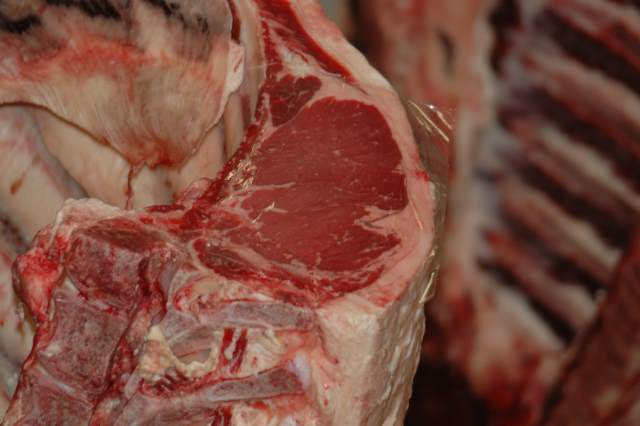March 11, 2015

Is shabu shabu shuffling its way to the culinary exits? Perish the thought.
Shabu shabu is a traditional way of dining in Japan where a group gathers around a pot of very hot water and using chopsticks, immerses vegetables and very thinly sliced Wagyu beef, then dips it in various sauces before it’s eaten.
While that traditional way of eating is still popular, the highly marbled and expensive Wagyu is giving way to a trend in Japan toward leaner beef, says Homero Recio, president and COO of Agri-Beef International, a beef exporting company in San Antonio, Texas. And that’s good news for U.S. beef producers.
“As our quality has improved and our percent Choice and Prime has increased, it’s something that fits well into what the Japanese are looking for, but it doesn’t have the price and doesn’t have the level of fat as the Wagyu A4 and A5,” he says.
What’s more, that’s just one of several trends that make a positive export picture. “Also what we’re seeing now in Japan is high-level steak houses opening up in the higher-end parts of major cities, especially Tokyo,” he says. There too, a shift in preference is evident.
“We’ve always talked about how the Asian market was not taking ribeyes, wasn’t taking strip loins, but using other parts of the carcass instead. But these steak houses are taking strip loins, they’re doing things like dry aging, they’re taking some of the concepts that have been popular for the last few years in the U.S. and are applying them to the Japanese market.”
Looking down the road, another trend portends an advantage for the U.S. beef industry’s product development efforts. Just as has happened in the U.S., craft beer is becoming popular in Japan and pubs serving locally-produced craft beers are beginning to spring up, Recio says.
That presents an opportunity for U.S. companies to develop products that can be marketed as pub food, he says. “They look at pizza, they look at Japanese-type finger foods. But beef has a place on this menu. Pub food is something that is a phenomenon here in the U.S., but is just starting to take off in Japan.”
Another area of opportunity for U.S. beef is the growth in food sold in convenience stores. Thanks to a recently-imposed consumption tax that has hurt fast food and mid-scale diners, convenience stores are stepping in. Food sales at 7-11 stores in Japan grew 29% last year, Recio says, because Japanese consumers are increasingly buying food to take home instead of dining out. “7-11 and other convenience stores have taken advantage and are taking some of the whole meal replacement business,” he says.
However, Recio throws a caution flag, telling cattle producers that they need to stay competitive in the global market. “Just because we’re the largest grain feeder in the world doesn’t mean we don’t have competition,” he says. “Australia has grain feeding, Mexico has grain feeding, of course Canada, there are some South American countries that are trying to gain access (to Asian markets) that are doing some grain feeding. So there is a tremendous amount of competition against your product in the Japanese market and the Asian market in general.”
In fact, according to the U.S. Meat Export Federation (USMEF), January exports of U.S. beef were down from a year ago due to a number of factors, including the West Coast port situation and a strengthening U.S. dollar. “We expected January to be a difficult month, so these results are not especially surprising,” says Phil Seng, USMEF president and CEO. “But I see the January slowdown as a wakeup call for the U.S. industry in terms of the fiercely competitive situation we face in key markets.”
Seng says conditions are improving in West Coast ports, but the damage caused by the union work slowdown is still not finished. “It is clear our competitors capitalized on our inability to move product in a timely fashion,” Seng says. “We need to win back the confidence of the valuable Asian customer base we spent many years building.”
You might also like:
Experts say ranching done right improves the environment and wildlife habitat
Is sexed semen the next reproductive standard?
Breathtaking photos of winter on the ranch
Bale grazing lets cows feed themselves
It's possible to pasture cattle without using fences
70 photos honor the hardworking cowboys on the ranch
You May Also Like



